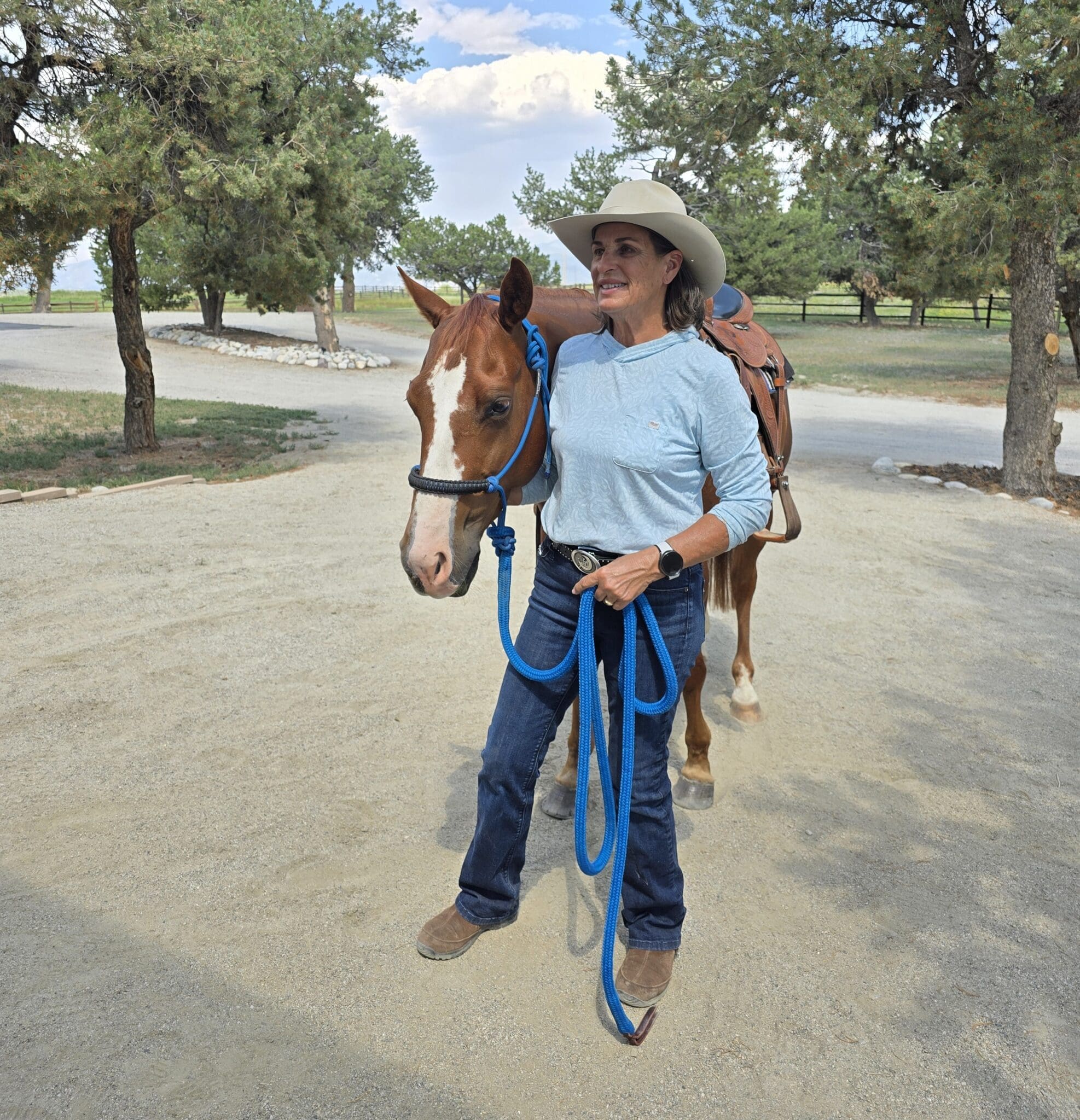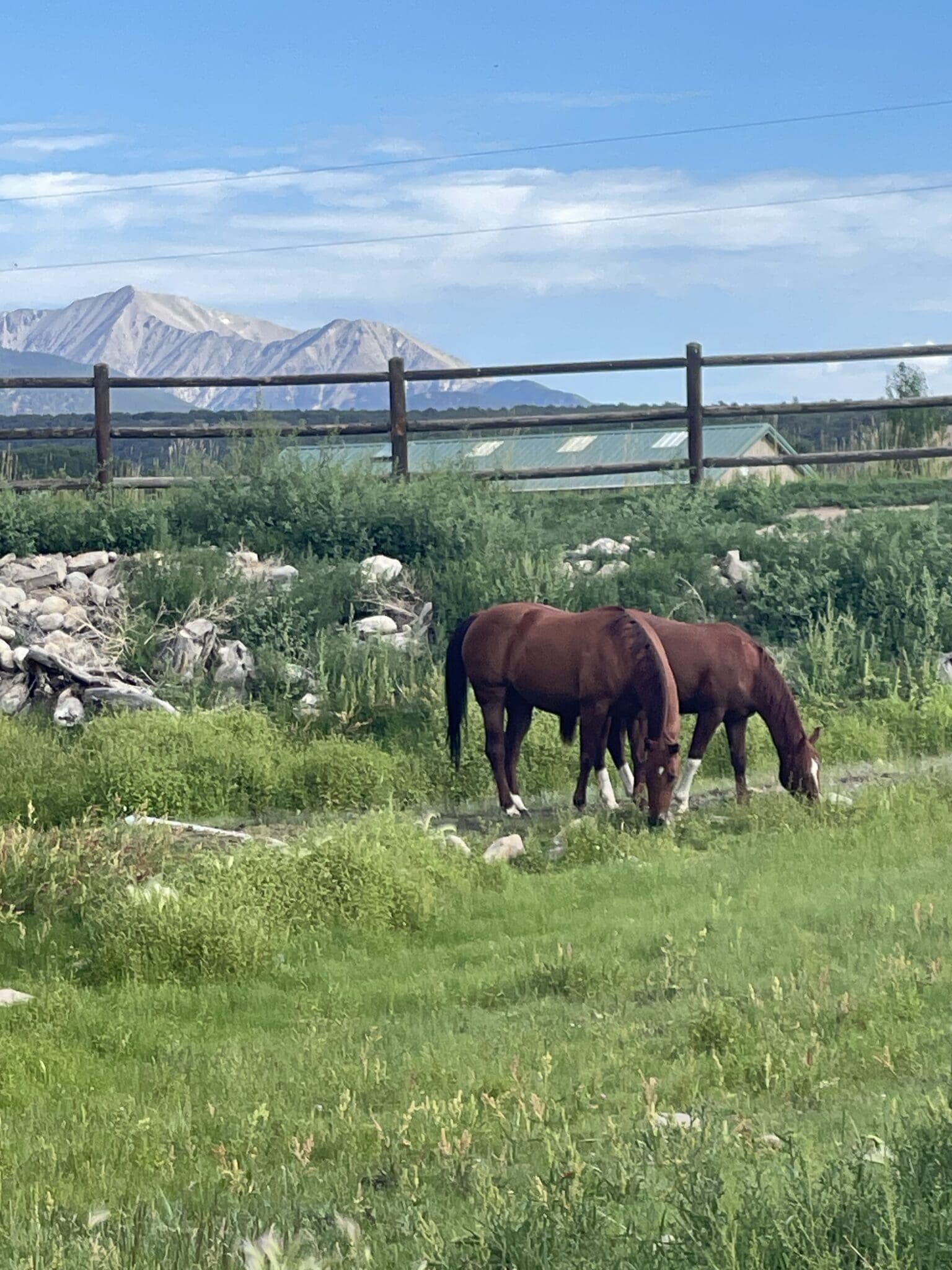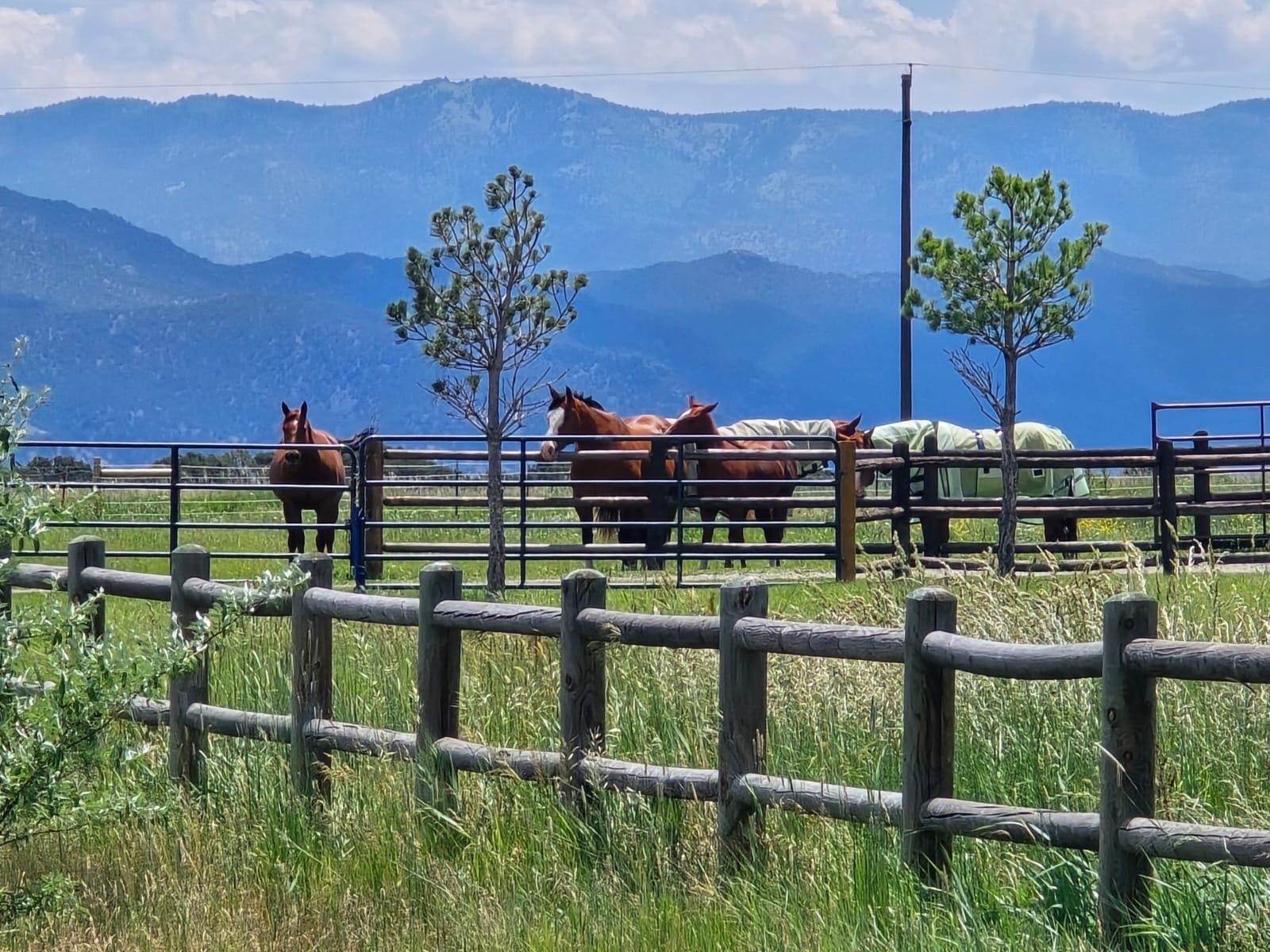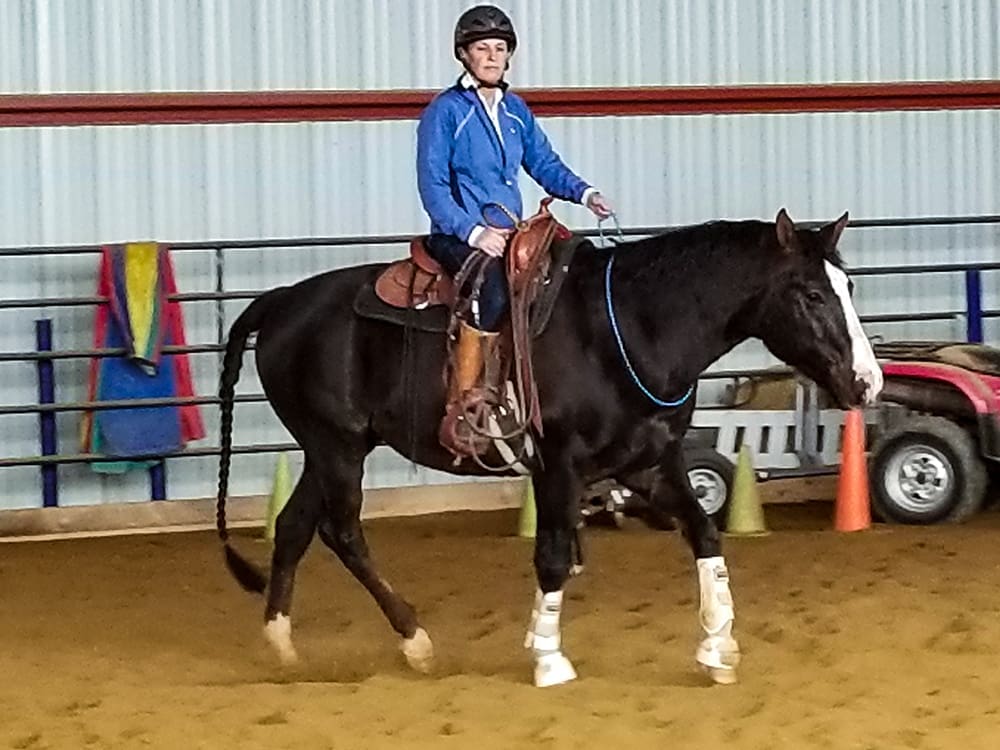This week’s episode of Horse Master is about training a horse to jump. Not that you could possibly explain how to train a horse for such a complicated activity in a half-hour TV show, but, as usual, I kept it simple. Just two things to know: low and slow.
Ashley and her OTTB (off-the-track-Thoroughbred) were both ready for this—Ashley has ridden Hunters before and is a pretty good rider, certainly good enough to start a horse over fences and she knows how to ride over jumps. And although I would’ve liked to see her horse working a little better on the flat first– less inverted, better transitions—her gelding was steady, relaxed, willing and in control. There’s no way in the 30 minute show I can cover everything that needs addressing with the horse and the rider, so I usually try to focus on one subject, which in this case was leaving Ashley with a plan to introduce her horse to jumping over the next six months.
In this episode, we showed a progression from simple trotting poles to poles and low cavaletti to canter poles to “pile o’ poles” combinations. The whole key to training good jumpers is to take it slow and keep it low to build a solid foundation. The quickest way to ruin a horse is to just start jumping him. I hear this all the time.
People say something like, “Oh, we started jumping and he’s doing great—you should see him jump—he loves it!” Well, all horses know how to jump and do it quite well—it’s part of the flight response. Just like all horses know how to do flying lead changes—doesn’t mean they know the cue to do it under saddle. Because jumping is a natural behavior for horses and not too challenging to their athletic prowess and because most horses are obedient and willing, if you point them at a jump and say giddy-up, they’ll go over it.
This initial willingness can devolve into mistrust, fear and bad behavior. They willingly go over more and more jumps until one day they have a bad jump—which all jumpers do on occasion—then, if they’ve been rushed into jumping, their courage is totally shattered. And their trust in you is damaged too because they were doing what you asked and got hurt (or scared); therefore you betrayed him. Then the horse starts running at the jumps or running around them, bucking when he lands or just flat-out refusing to jump. Have you ever seen a horse that discouraged by jumping?
On the other hand, when a solid foundation of ground poles, cavaletti, and very low jumps is built into the horse’s training, over an extended period, he learns that poles will move and fall down, may sometimes get tangled in his legs, or trip him, that jumps look different from different directions, etc., so that when that time comes and he has a bad jump, his confidence is not totally blown. Height comes easily to horses; a solid foundation of control, cadence and balance comes low and slow.
I grew up riding jumping horses and I loved it dearly. The only thing that comes close to the thrill of jumping is doing cow work. Whenever I am around it, like on this week’s episode of Horse Master, I get the bug to do it again. But alas, I have one really nice horse in my barn that I don’t get to ride enough, and he’s definitely not a jumper. But I bet we could do it….
Enjoy the ride!
Julie
For training tips from Julie, visit the Training Library at Membership Website and check out her online store–full of training tools and DVDs– at Julie’s Shopping Cart



